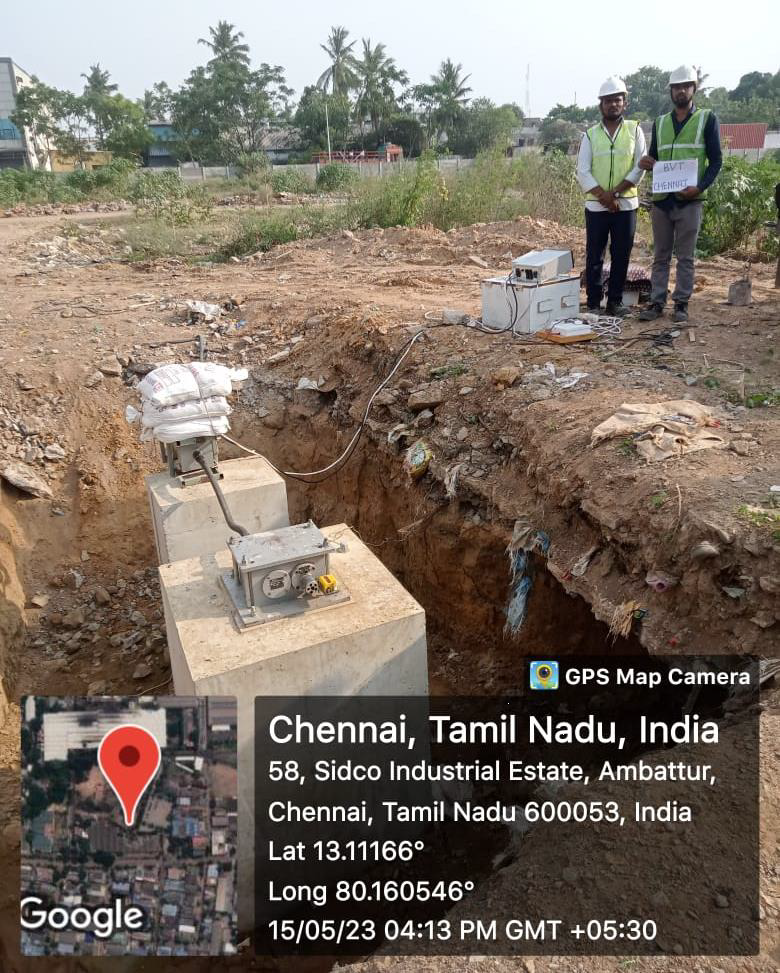

The current blog explores the method of conducting a block vibration test specifically tailored to the site in Chennai, aiming to provide essential design input parameters for analyzing the effects of vibrations.
Introduction
In the vibrant city of Chennai, Tamil Nadu, the safe and reliable construction of structures is of utmost importance. With a site located a mere 300 meters away from the tracks, it becomes crucial to understand the effect of vibrations induced by the movement of trains. To ensure the design and construction of structures that can withstand these vibrations, conducting a block vibration test becomes essential. The block vibration test is a widely used method to evaluate the dynamic properties of soil. It involves exciting the ground using a mechanical shaker and monitoring the response of the soil using accelerometers and geophones. By analyzing the recorded data, vital information regarding the soil’s behavior under dynamic loads can be analyzed, such as the shear modulus, damping ratio, and natural frequency.
Site Description
The selected site in Chennai, Tamil Nadu, lies in close proximity to the railway tracks, making it vulnerable to vibrations induced by passing trains. It is essential to determine the dynamic soil properties accurately to design structures capable of withstanding these vibrations. The site’s geological characteristics include the soil type, composition, and stratigraphy, which significantly influence the soil’s dynamic behavior.
Understanding the Need for the Block Vibration Test
The block vibration test serves as a fundamental tool in determining the dynamic properties of soil. In the context of the site near railway tracks, the primary objective of the test is to assess the potential impact of train-induced vibrations on the soil and adjacent structures.
Quantifying Soil Response: The dynamic behavior of soil under varying load conditions, such as train-induced vibrations, differs significantly from static conditions. The dynamic soil parameters directly influence the soil-structure interaction and, therefore, the design and performance of structures in proximity to the railway tracks.
Safety and Structural Integrity: Structures near the railway tracks, including buildings, bridges, and other infrastructure, are exposed to train-induced vibrations. Excessive vibrations can compromise their integrity, leading to potential damage, reduced service life, or even safety hazards.
Mitigating Environmental Impacts: Vibrations induced by trains not only affect structures but also pose potential risks to the environment. For example, excessive vibrations can impact nearby ecosystems, underground utilities, or sensitive equipment.
Regulatory Compliance: Government authorities and regulatory bodies often mandate assessments of vibrations induced by railway operations. Conducting the block vibration test demonstrates compliance with regulations and ensures that the project adheres to the required standards. The test results provide objective and quantifiable data to support decision-making, project approval, and compliance with relevant guidelines and regulations.
Our vast experience in conducting block vibration tests across the country, makes us the leading service provider. The knowledge and experience of our Chief Consultant, Dr. Abhinav Mane guides us to deliver essential services with accuracy and precision.